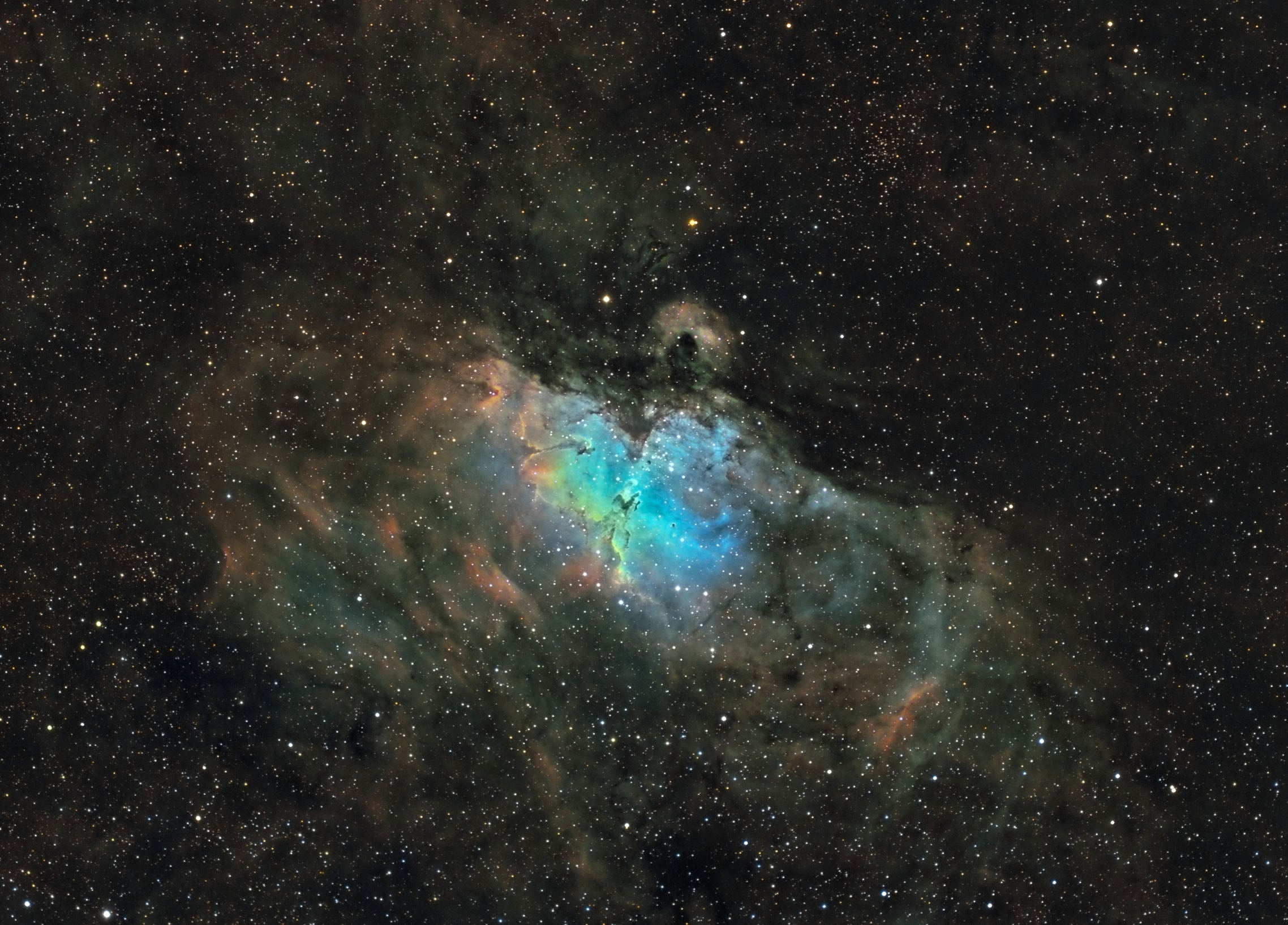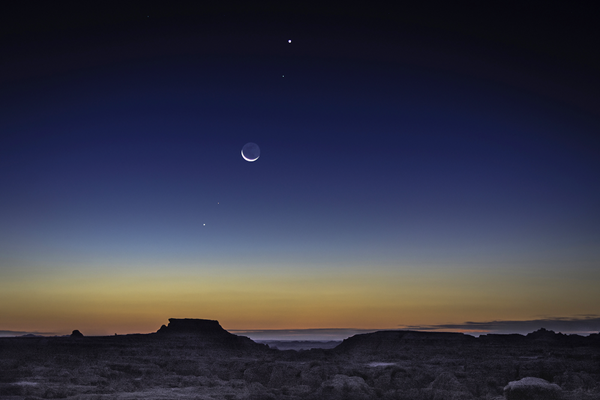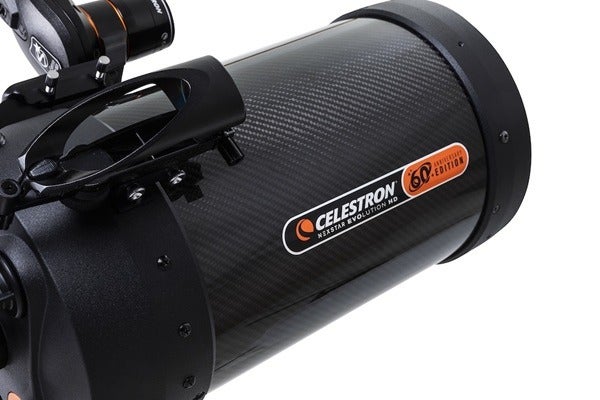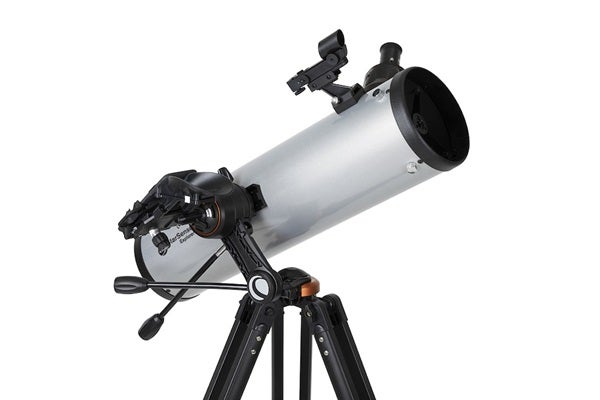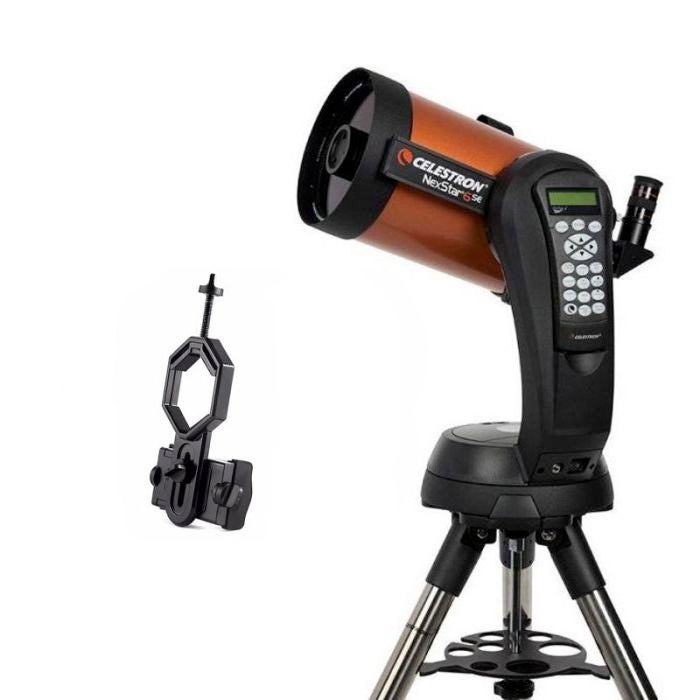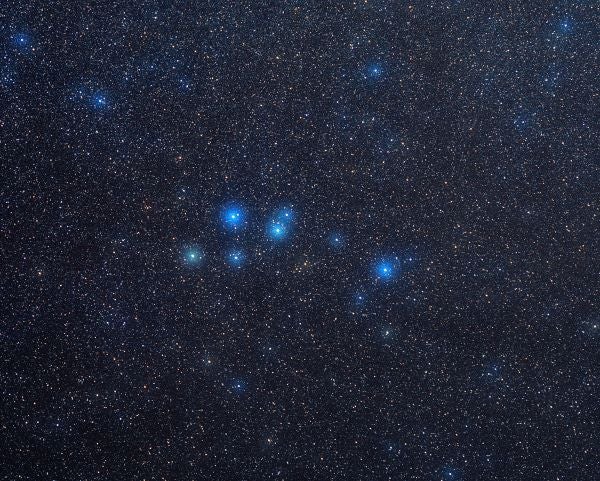
This month, we find Delphinus the Dolphin swimming in an empty portion of the sky, east of the Milky Way’s plane. Ranking only 69th in size among the 88 sanctioned constellations, Delphinus is drawn from just five 4th-magnitude stars.
Despite their dimness, Delphinus stands out surprisingly well, even under the veil of suburban light pollution. That’s likely because of the distinctive pattern they form. Four of the stars – Alpha (α), Beta (β), Gamma (γ), and Delta (δ) Delphini – create a sharply pointed, diamond-shaped asterism known as a lozenge. All four fit nicely into the fields of most binoculars.
Measuring 1.3° by 2.7°, this four-star asterism is also known as Job’s Coffin. The origin of that rather macabre nickname is lost to history, but there’s no question that the four-star sarcophagus is interesting to study through binoculars.
Its northwestern corner, Alpha, properly named Sualocin, is a blue main sequence star with a surface temperature about twice that of our Sun’s. Its color is apparent through binoculars, especially after slightly defocusing the view.
Compare Alpha to Beta Delphini, the southwestern corner. Also known by the proper name Rotanev, Beta is a closely set pair of yellow-white subgiant stars. Although far too close to resolve through binoculars – or most amateur telescopes, for that matter – those stars pool their efforts to display a soft yellowish tint.
The origin of these stars’ curious proper names dates back only to the 19th century. In 1803, two years after he discovered the first asteroid (now classified as a dwarf planet), Ceres, Sicilian astronomer Giuseppe Piazzi released the Palermo Star Catalogue. When the catalog’s second edition appeared in 1814, the stars Alpha and Beta Delphini had been named Sualocin and Rotanev.
How did that happen? Nineteenth-century English astronomer Thomas Webb unraveled the mystery. It turns out Piazzi’s assistant, Niccolò Cacciatore, oversaw the second edition’s creation and publication. Translated into Latin, Niccolò Cacciatore becomes Nicolaus Venator. Spell his Latinized name backward and what do you get? Sualocin and Rotanev. Cacciatore’s little practical joke has endured for more than two centuries.
Delta Delphini, the southeastern corner, is an unusual spectroscopic binary system. Both white-hot suns combine characteristics of a type A star with that of a type F.
Closing the diamond is Gamma Delphini, at the northeastern corner. Gamma is a striking binary star system through amateur telescopes, pairing an orange 4th-magnitude primary star with a 5th-magnitude pale yellow companion, separated by 10″. That’s too close to resolve through most binoculars. I can sense Gamma’s duality through my 25x100s, but cannot split them cleanly. I would be interested in receiving your reports on resolving Gamma through high-power binoculars.
Shift your attention 2° south-southwest of Job’s Coffin to Theta (θ) Delphini and the surrounding bevy of fainter points. Webb was also first to draw attention to this region in his 1859 Celestial Objects for Common Telescopes. He noted that Theta was nestled “in a beautiful field.” My friend the late John Davis interpreted Webb’s “beautiful field” more inventively, connecting the stars into a small asterism he called the bucking bronco. His creative mind saw orange Theta as the bronco’s saddle. To its east, a triangle of faint stars traces the steed’s raised leg, while a trail of faint stars to the southwest completes the horse’s form. The rider is an arc of 10th-magnitude stars curving north from Theta.
Finally, extend a line from Alpha to Delta and continue southeastward for just over 8° to a delightful double star, Gamma Equulei. Turn your binoculars its way and you’ll immediately notice that 5th-magnitude Gamma is joined by a 6th-magnitude star to its southeast. This second sun is cataloged as 6 Equulei. If you have keen color perception, Gamma may look slightly yellowish, while 6 is white. Both are separated by 6′, making them easily resolvable through the smallest pocket binocular. Their pairing is purely circumstantial, however. Gamma is 118 light-years away, while 6 Equ is almost four times farther out. Few observers ever notice Gamma because it lies in the obscure constellation Equuleus the Little Horse. Were it more prominently positioned in the sky, it would surely be a seasonal binocular favorite.
Comments, suggestions? Contact me through my website, philharrington.net. And remember, two eyes are better than one.

